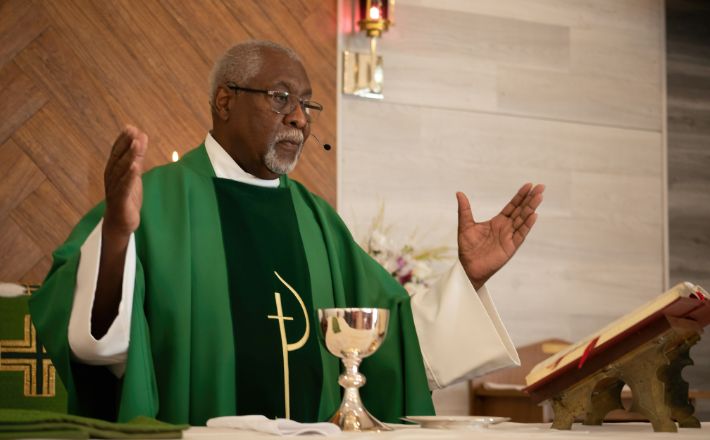It’s hard to improve at preaching without receiving good sermon feedback.
Some preachers are fortunate enough to get that from their hearers. Consistent, relevant, honest feedback, born of a genuine desire to strengthen a preacher’s practice for the sake of the vitality of the whole congregation’s witness.
But some preachers don’t get that kind of feedback loop. They hear “nice sermon” on a good day and idiosyncratic objections on a not-so-good one. The generic compliments and the ruffled feathers are not unimportant. They just don’t provide enough information to support a preacher who seeks local homiletical excellence week after week.
Teach: How to listen to a sermon
One of my favorite series to teach in adult education classes in local churches is called “how to listen to a sermon.” Over the course of a few weeks, I invite folks to reflect on the practice of preaching. I invite them behind the curtain to learn what is involved in preaching week to week. I invite them to think about how they shape the preaching they hear, even when they don’t realize it.
In the “how to listen to a sermon” series, I start by showing a clip of a spoken word performance and asking the group how it is like and unlike a sermon. What becomes clear immediately is that there are already diverse ideals in the room. People come with convictions about what preaching is and what good preaching is like. From there we begin to explore those differences, looking at biblical texts, wrestling with theological tensions, and considering why we are drawn to some ways of preaching and not others. I briefly introduce them to the landscape of historical preaching traditions and contemporary approaches. People often comment that they had no idea there were so many ways to preach the Word.
Challenge: Step into the preacher’s shoes
The next week I ask participants to step into their preacher’s shoes. I give them a biblical text and invite them into sermon purgatory, as if they would be preaching here in a week or two. They are prompted to try a close reading of the text, noticing what is there and what they are importing. I send them into the weeds of some scholarly debates about the nuances of the text before them. And I ask them to try and identify a heartbeat that connects to something unfolding in the congregation today, a message emerging from the text that just won’t go away. Many are self-conscious about making such a claim, but it is clear they are invested in the process of discerning a sermon and find themselves empathizing with the preacher in a new way.
Reflect: How hearers shape the preacher
Our final session is focused on how hearers co-create sermons and how they shape the development of the preachers they hear. I share clips of diverse congregations listening to preaching and ask them to describe the kinds of listening they see. Some of the congregations literally talk back; others talk with their eyes, their faces, their bodies. The group reflects on how they talk back as they listen to a sermon—even if what they are saying internally is “what?” or “that’s not right” or “I don’t think it’s like that.”
I ask them to do a self-audit about what they say to their preacher on the way out the door and ask them to consider what the preacher might need from them to grow in their preaching work. You sent the preacher to do this thing, I remind them! How you listen and respond matters.
We talk about how to prepare to listen by reading the biblical text and praying for an expectant spirit, even when the preaching style is not an exact fit in relation to one’s “home homiletic.”
We talk about being curious about the how and not just the what as the sermon unfolds. We talk about what to do if you are just plain bored or disagree or can’t follow the logic of the sermon.
And finally, we talk about the delicate matter of ministry to a preacher following a sermon. I encourage them to comment on what was meaningful, and to name what decisions the preacher made that helped them hear. When things did not go as well, I encourage them to start with the importance of what the preacher tried to say, to ask good questions, to share what made it harder to hear on this particular day.
If you are in a congregational setting where the feedback consists of generic compliments or ruffled feathers, consider investing some time and energy in teaching people how to listen to a sermon. It will not fix everything, of course, but it is a step toward forming the listeners we need. In my experience, people are so curious about what preachers do! They want to know. They want to help. They just need an invitation.

